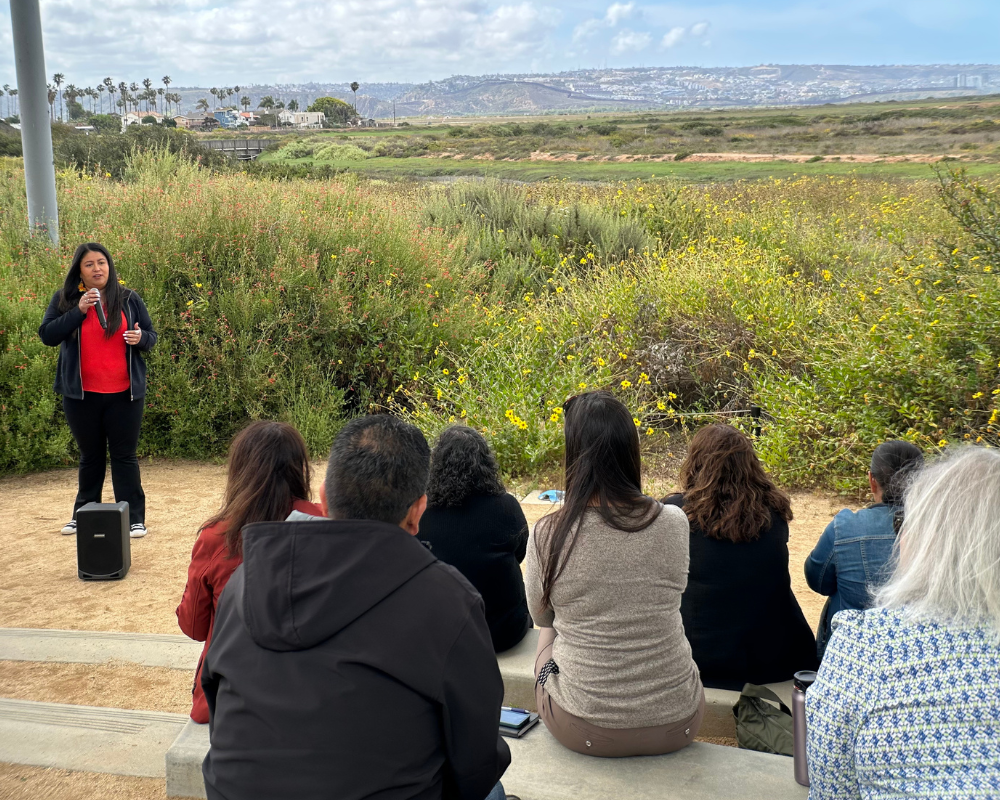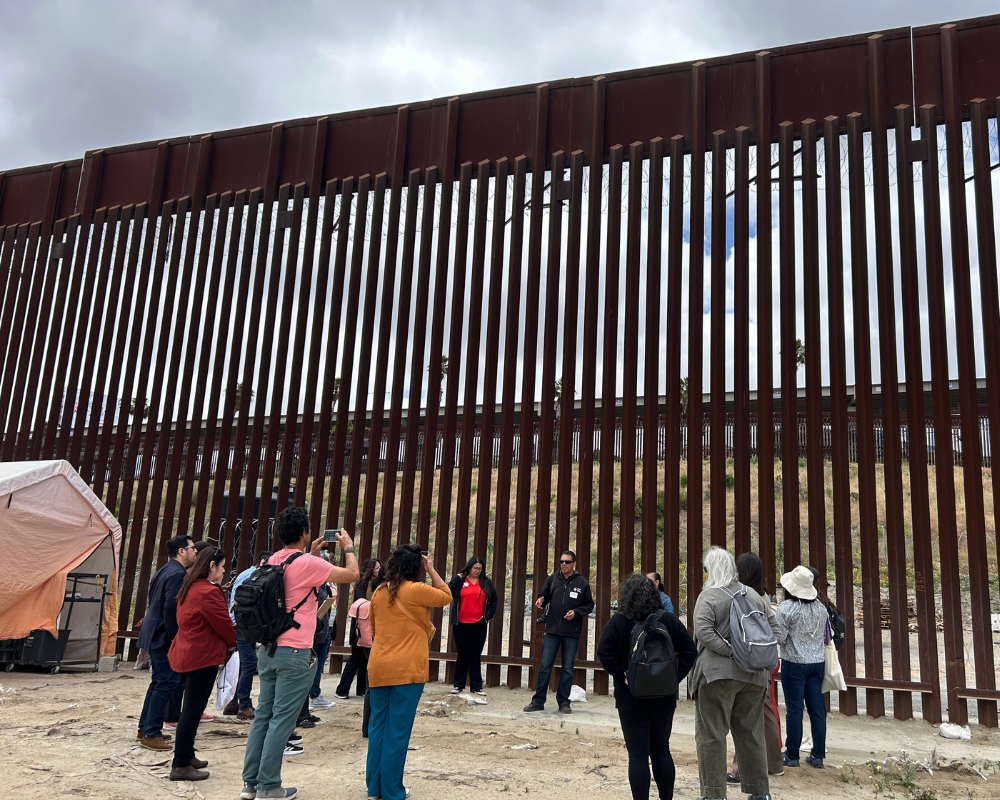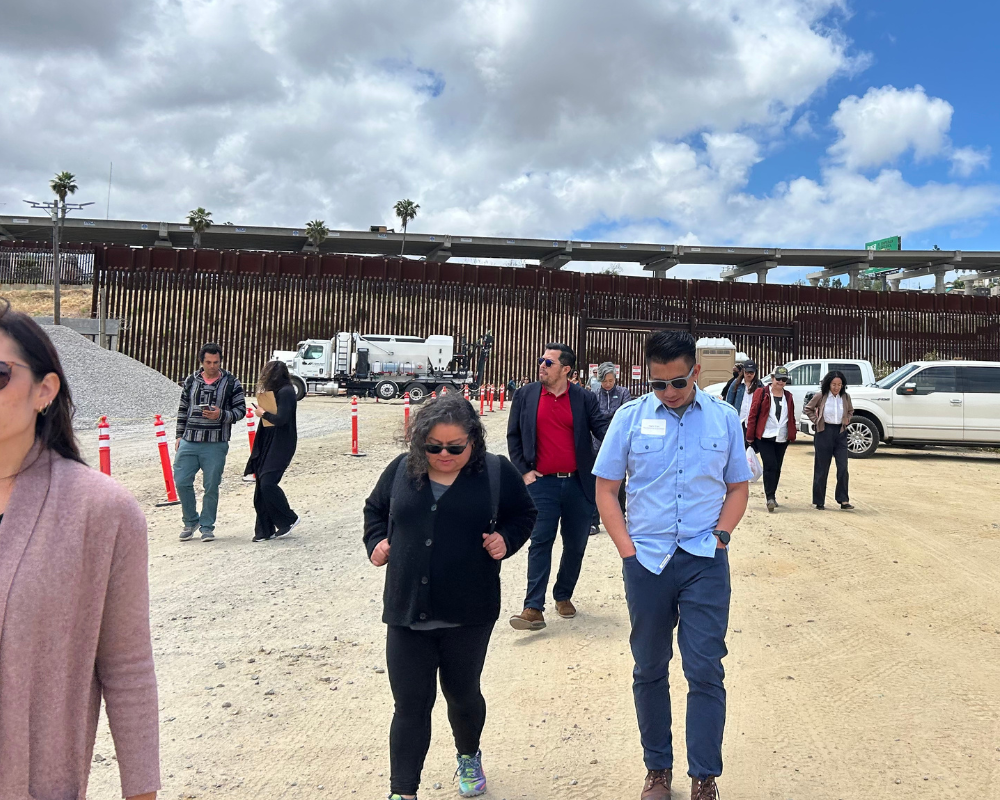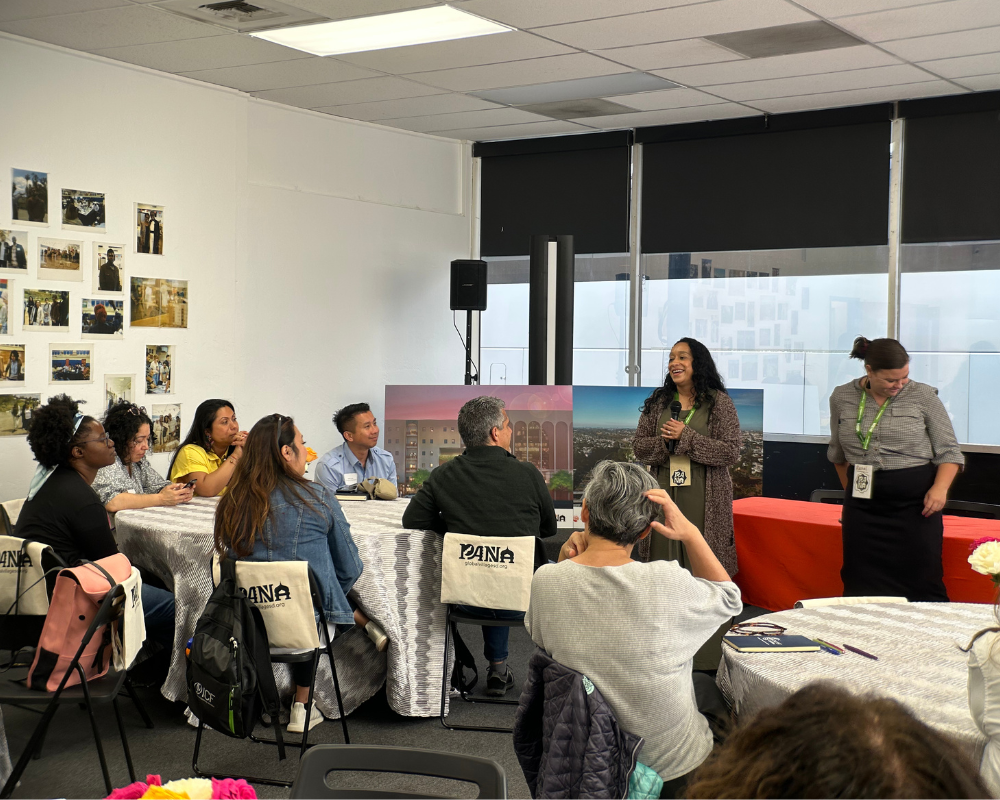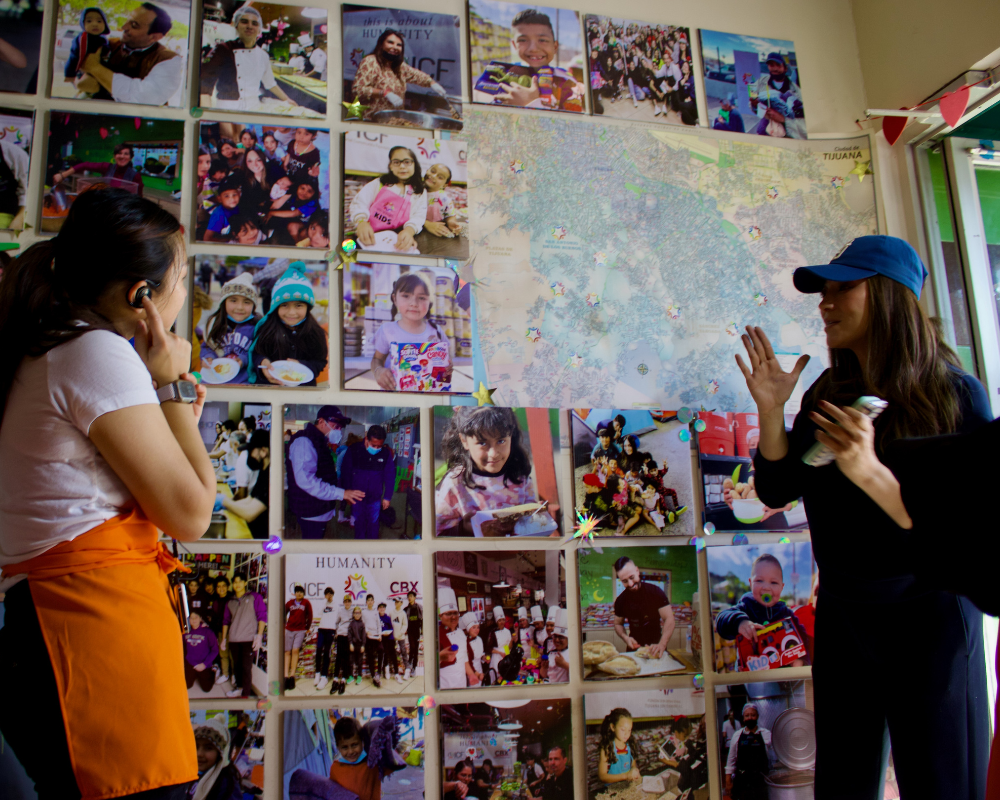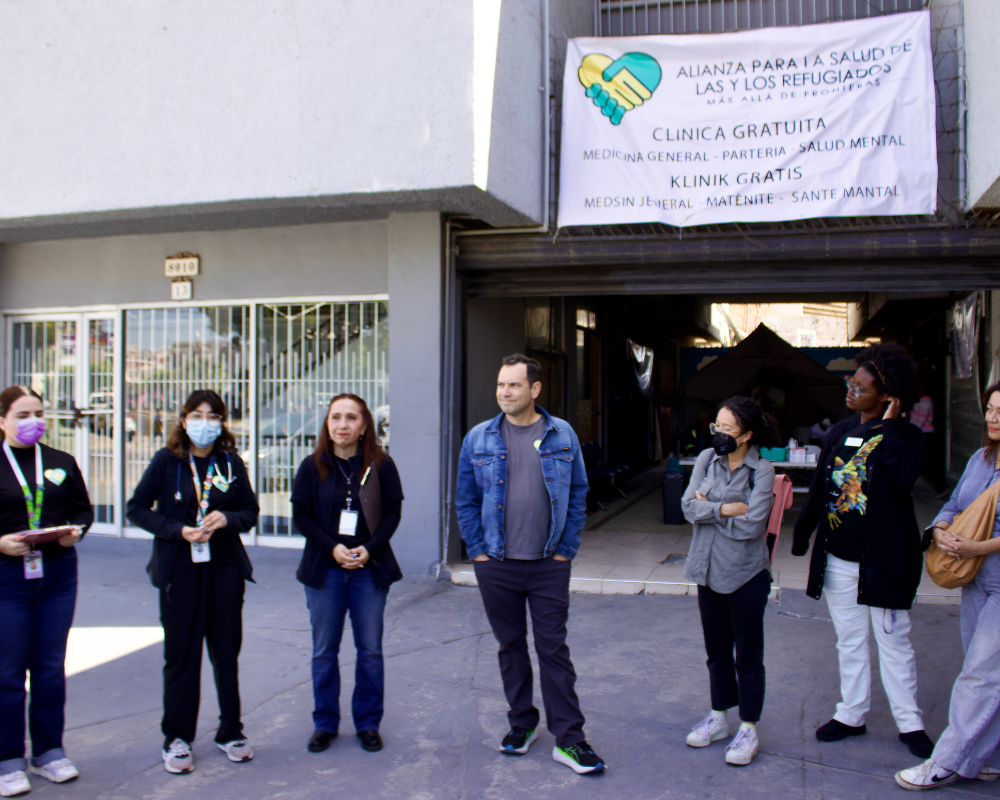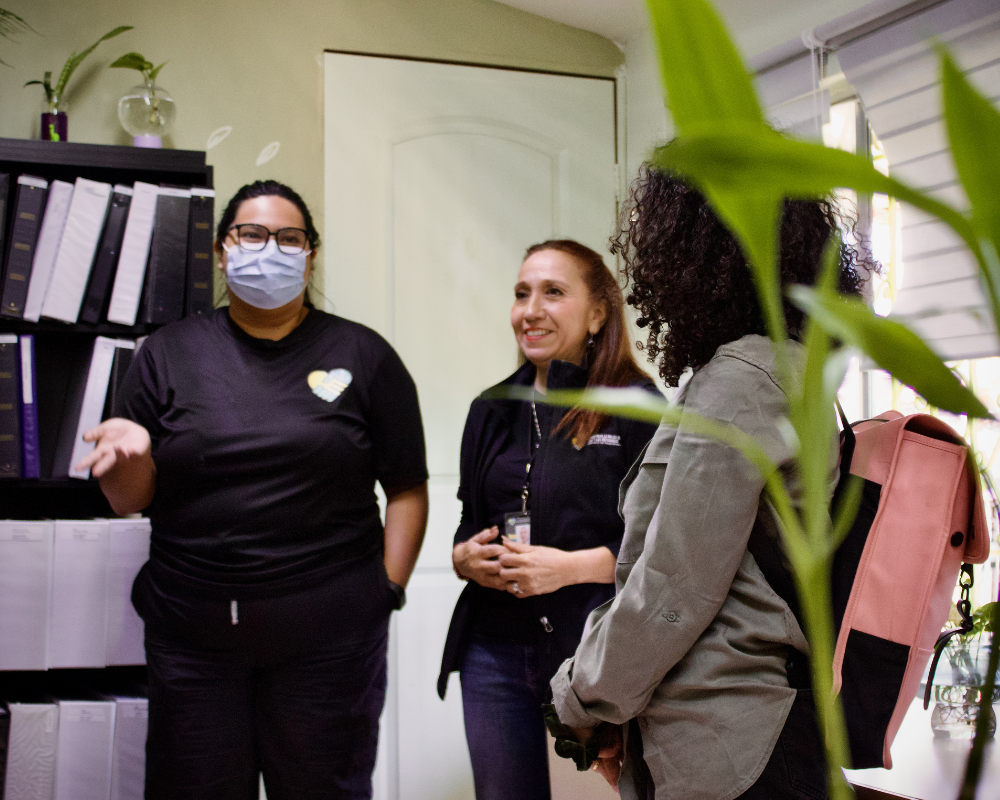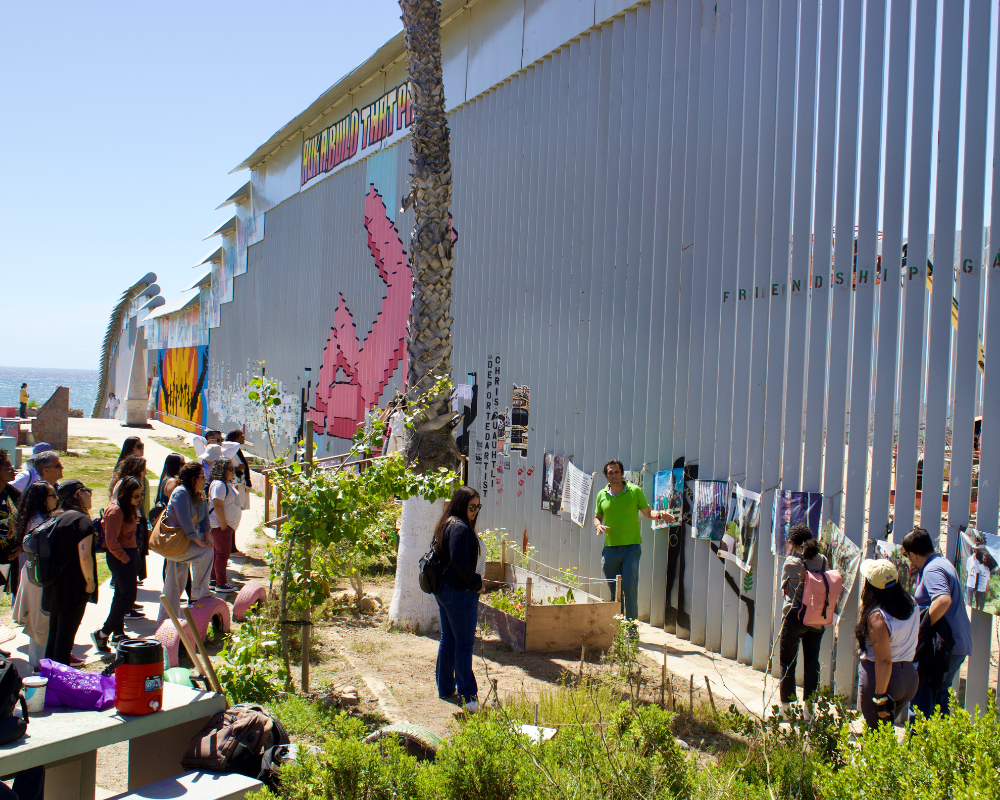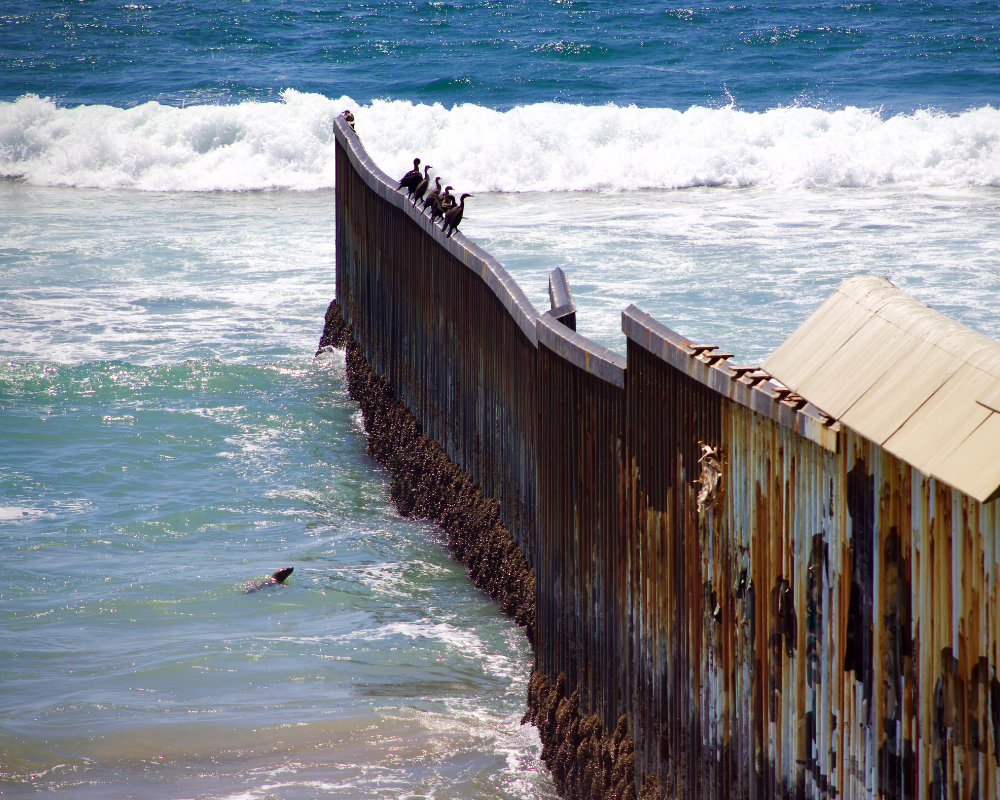Do the Work, Event Insights
Do the Work Border: Humanizing the Migrant Experience
As part of our Do the Work series, Catalyst members recently embarked on a powerful learning journey visiting nonprofits and communities on both sides of the border where philanthropy is making a critical difference. Read on to discover key takeaways from the trip and recommendations for philanthropy moving forward.
San Ysidro hosts the busiest land border crossing in the world and one of the main points of entry for those seeking asylum or other protected status in the United States. Currently, thousands of migrants from across the globe are stuck in limbo in Tijuana as legal pathways for entry into the U.S. have essentially ground to a halt. Funding cuts to the U.S. Agency for International Development have also brought some migrant shelters in Tijuana to the brink of closure.
In May, as immigration policies and enforcement continued to evolve, Catalyst brought a group of funders and community leaders to the border to see these challenges firsthand. During the return of our signature Do the Work program, 25 participants joined us for a two-day trip on both sides of the U.S.-Mexico border to connect with organizations working tirelessly to provide humanitarian aid, legal support, and case management, as well as meet individuals who are being directly impacted by changing immigration policies. The trip shed light on how a longstanding coalition of nonprofits are moving forward in today’s volatile environment to ensure migrants have access to safety, dignity, and support as they navigate the many challenges before them.
Day One: The San Diego Side of the Border
We began our journey at the Tijuana River National Estuarine Research Reserve (TRNERR), a nature reserve encompassing salt marsh and riparian habitats, and surrounded by the urban areas of Imperial Beach, San Diego, and Tijuana. We learned about the environmental challenges this ecologically critical space faces and the research and stewardship solutions currently underway to protect the reserve, which transcend boundary lines.
In stark comparison, we next traveled to Whiskey 8, a barren stretch of border wall in San Ysidro, which for many months was where groups of up to 1,000 individuals each day would gather to await transportation by border patrol agents. Nonprofits and community volunteers brought food, water, medical aid, and morale support to this open-air detention site. We were joined by leaders from the American Friends Service Committee (AFSC), which runs an aid station in the shadow of the 30-foot border wall, and the ACLU of San Diego & Imperial Counties, who gave the group insight into policies affecting the asylum system and what was currently happening on the ground. Until all asylum processes were halted in early 2025, AFSC regularly provided migrant families in the “No Man’s Land” between fences with food, bottled water, and first aid services, while also documenting conditions migrants face at the site.
Next, we visited the Mid-City development site for the Refugee and Immigrant Cultural Hub, warmly referred to as the “RICH Campus.” Led by PANA, it is envisioned as a 2.2-acre campus that will provide affordable housing, job training, health services, and more for refugees from around the globe who have made their home in San Diego. Their staff held a coffee ceremony for us, complete with Somali coffee and tea, as well as a stretching activity led by staff from the KAREN Organization of San Diego. After lunch, leaders from PANA, Jewish Family Service, and Casa Cornelia Law Center joined us to share how their work and needs have pivoted over the last few months and what it’s like to be, in their words, in the “eye of the storm.” They also shared how philanthropy can best support them by doing things like providing flexible and unrestricted funding.
We ended the day at the Museum of Us for an exploration of Hostile Terrain 94, a participatory map installation created by the Undocumented Migration Project and designed to raise awareness about policies that have led to regularly occurring deaths of migrants attempting to cross the U.S.–Mexico border. Afterwards, we were given a special surprise with the chance to view interactive art created from sections of the border wall, recovered by the Museum of Us during construction of even higher walls in 2023. The massive slabs — each running 18 feet high by eight feet wide and weighing 4,300 pounds — are being transformed into “community tables” for interpretive installations to be housed by community groups on both sides of the border.
Day Two: Tijuana
On Day Two, our group reboarded the bus, this time traveling across the border to visit organizations in Tijuana serving vulnerable migrants. Though providing the first border touch-point for many, these organizations receive little visibility in discussions in the U.S., and minimal coverage from American news outlets. We traveled first to a food kitchen run by Tijuana Sin Hambre, a nonprofit operated by volunteers from both sides of the border. The kitchen recently opened in partnership with This Is About Humanity and the International Community Foundation. Participants spoke directly with the organization’s co-founders and jumped in to help the head cook with the day’s food preparations, chopping zucchini and potatoes for some of the 3,000 meals distributed daily to local migrant shelters, orphanages, and schools for migrant children. Tijuana Sin Hambre’s innovative food pantry model also includes a cadre of community members cooking in their homes and helping to distribute meals with the goal of eliminating food insecurity in Tijuana, especially among vulnerable populations like migrants, children, and seniors.
Next, our group visited the Refugee Health Alliance/Alianza para la Salud de los Refugiados, which offers a uniquely holistic, trauma-informed care model for displaced populations in Tijuana. In addition to basic medical care, they provide mental health, prenatal, and LGBTQ+ healthcare, as well as space for showers, hygiene care, legal aid, and more. Guides from Alianza para la Salud de los Refugiados shared with us the overwhelming needs and unique challenges of supporting the diverse populations that they care for.
We then walked next door to Espacio Migrante, a shelter and cultural center where migrant families can participate in community activities and educational programs, as well as access health and legal services. The organization has adapted quickly to serve the unique needs of global migrants converging in Tijuana, including translation services and Spanish-language instruction. This diverse population includes sizeable Haitian and African communities, many of whom have found themselves establishing long-term lives in Tijuana. Individuals who have been impacted by changing border policies joined us to share their emotional stories about being displaced and how it has affected their lives.
Our journey closed at the Binational Friendship Garden in Playas de Tijuana, where we viewed vibrant public art covering the border wall and explored the community garden showcasing native plants. Though once a valuable place for friends and family to connect through the wall, the United States has since restricted access and built harsh physical barriers that no longer allow that connection. The garden signifies the unity of our two areas: despite being divided by a wall, the flowers and plants that grow on the Mexico side are the same flowers and plants that grow on the US side and the artwork speaks of love, peace, and connection.
As we took in the view of the westernmost portion of the border wall disappearing into the Pacific Ocean, we reflected on the many stories we’d heard of struggles faced, as well as those of solidarity, hope, creativity, and love.
Key Takeaways
- Cross-border challenges require cross-border collaboration. At the Tijuana River National Estuarine Research Reserve, we saw how environmental issues like river pollution don’t stop at the border – contamination impacts ecosystems and communities in both Mexico and the United States. The Binational Friendship Garden symbolizes how the terrain in each country is no different, despite being divided by a wall. Building sustainable, humane systems requires us to work together across the border, in both policy and practice.
- Philanthropy has stepped in as a critical lifeline. As federal funding has drastically reduced, organizations are struggling to meet their growing needs. At organizations like Tijuana Sin Hambre, which prepares and distributes 3,000 meals a day to shelters and schools, philanthropic support is what’s currently keeping people nourished. While philanthropy can’t replace public investment, it has become essential to keeping critical services afloat and allowing nonprofits to respond with speed, creativity, and compassion where public systems have fallen short.
- Flexible, unrestricted funding is vital. Leaders from PANA, Jewish Family Service, and Casa Cornelia Law Center emphasized how quickly their work has had to evolve, sometimes changing service models overnight in response to policy rollbacks or humanitarian needs. When migrants were held between the border walls, American Friends Service Committee shifted their operations to provide food, water, and medical aid to people at the open-air detention site in San Ysidro. Without flexible, unrestricted funding, these organizations wouldn’t have the capacity to respond to urgent needs as they arise. The situations on the ground change by the day, and rigid funding streams cannot keep pace with the complexity and volatility of border dynamics.
What’s Next?
The nonprofits and community leaders along the border work hard every day to provide critical humanitarian, health, and legal services, and to protect the basic rights of migrants from across the world. They help families feel safe, welcome, and well-equipped for what is to come, no matter where they ultimately make their home.
Philanthropy has become a critical lifeline in addressing challenges along the border, stepping in where federal, state, and local government support falls short. While philanthropy cannot solve these complex issues alone, it has been the primary source of funding for many of the essential efforts happening right now. In the face of even fewer resources and greater hardship, philanthropy can help to support a more sustainable, safe, and dignified path for those seeking a brighter future in the United States.
Interested in getting involved?
As we heard from countless organizations, unrestricted funding is urgently needed to help migrant-serving nonprofits pivot during times of upheaval, as the situation on the ground is changing all the time.
- Giving in Tijuana: The International Community Foundation, based in National City, helps U.S. funders give to nonprofits operating in Mexico, navigating legal complexities and tax implications to comply with U.S. charitable giving regulations while ensuring funding reaches trusted, high-impact local service providers: https://icfdn.org/get-involved/
- Collaboration in the U.S.: Join Catalyst’s Binational Migration Funders Collaborative, which seeks to ensure the legal and wellness needs of all immigrants and refugees who pass from through Mexico San Diego and Imperial Counties are met, and advocates for sustainable permanent immigration infrastructure to meet those needs in the future: https://catalystsd.org/catalyst-collaborative/binational-migration-funders/
The Catalyst team would like to thank the core planning team for this tour, comprised of members from International Community Foundation and Southern California Latinx in Philanthropy, for their time and effort in developing this program.

